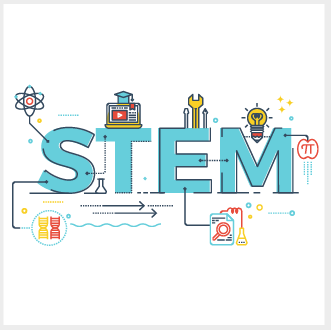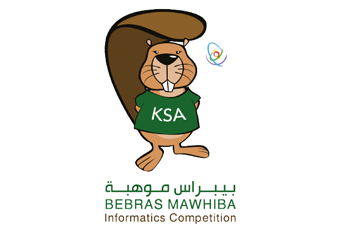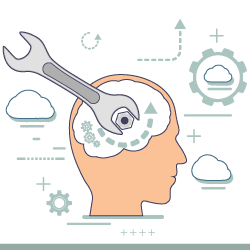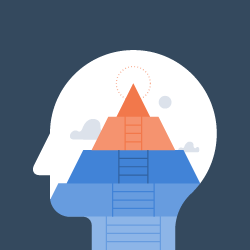Benefits of STEM Competitions for Gifted Students

Mark W. Oleksak
Creativity
17
Scientists have become the torchbearers of discovery in the quest for knowledge.
Discovery!
Discovery is defined as the observation of a phenomenon or the acquisition of knowledge about something for the first time. This is evident in our lives, through the availability of products, services and information that are provided to us through some form of discovery. Scientists, entrepreneurs, explorers and pioneers have made efforts in these aspects. These great people are the ones who led the way to the greatest scientific discoveries of all time, including electricity, smartphones, penicillin, genome editing, DNA structure and its clustering sequences.
Here we explore the similarities in the type of educational foundation they had that led them to these important discoveries. Most of the individuals involved had a deep upbringing in the critical thinking skills inherent in STEM education, including the process of arriving at conclusions logically, the ability to communicate their work, and foster collaboration. For example, penicillin was discovered in 1928 by Scottish researcher Sir Alexander Fleming. He discovered it while studying viruses. His educational background and experience inspired him to conduct further research, and he discovered that the mold culture (penicillin) he was experimenting with could prevent the growth of bacteria, even after he had diluted it 800 times! Penicillin is the most widely used antibiotic in the world today.
Accordingly, to reach the most important great discoveries as well as simple achievements, what are the best ways to develop the competencies of our young generation? It is clear that the necessary basics are required in addition to their implementation, and participation in science, technology, engineering and mathematics (STEM) competitions is one of the most important projects that have proven their effectiveness, such as science fairs. The first science fair was called the "Children's Fair" and was held in New York City in 1928 at the American Institute. The competitions initially focused on natural research and then expanded to additional fields in science and engineering. In 1942, the Science Service established the "Scientific Talent Search" initiative, which entered the scientific research process.
Later, the International Science and Engineering Fair (ISEF), launched in 1950, was created with a focus on research and communication methodology, and from this beginning, many STEM competitions were launched, followed by many competitions in the global scene, including all areas of the International Olympiad, the Innovation and Technology Exhibition (ITEX), the First LEGO Robotics Competition, and the VEX Robotics Competitions. These competitions are great for students of all educational levels and of all mental abilities, especially at the school and local levels.
The main benefits of these competitions for participants at the pre-university level (school education) are as follows:
- Enhancing the educational experience through practical, project-based learning:
Students need to study the STEM education standards and all courses, however, studies have shown that by doing, students learn more and achieve more in these foundational areas.
- Practicing practical science learning skills:
Students participating in competitions can practice the basic skills required in most science, technology, engineering, and mathematics (STEM) fields, including observation, reasoning, prediction, classification, measurement, and communication.
- Sharing with others and communicating with peers in the same age group and area of interest:
Peer interaction is crucial for pre-college students, providing feedback and the potential to build self-esteem.
- Assessing educational progress compared to peers around the world:
The global competition allows for measuring a student’s current level of education – at the individual or national level and in different areas of learning – and provides a benchmark for developing skills and project-based learning capabilities.
- Communicating with others and with evaluators:
Communication skills - as one of the main practical skills - may be the most important for a student to achieve high proficiency in, as both accumulated knowledge and applied work will be useless unless they can be communicated effectively, whether written or verbal.
As for gifted students, in addition to the above mentioned benefits, the greater concern and responsibility is related to how to sharpen their skills in these competitions and benefit from them to the maximum extent possible. The following list illustrates some key points on how gifted students can benefit from competitions for the purpose of their growth in the educational environment:
1. Explore topics of interest: For gifted students in middle and high school, competitions can be an opportunity to participate in many different areas and topics. This will give them a chance to start making a list of what really “interests” them and ignite their intellectual curiosity for more learning opportunities. This is where the journey of discovery begins!
2. Practice the methodology in the real world: Through competitions, talented students can take trips and learn the same methods and techniques used by researchers and inventors in academia and industry.
3. Improving personal skills: Most competitions allow students to practice improving personal skills that are part of the 21st century skills, which will be necessary in current and future professions, including: leadership skills, teamwork, communication skills, problem-solving skills, work ethics, flexibility, adaptability, and interpersonal skills.
4. College and University Registration and Preparation: Competitions are excellent certificates for supplementary courses to add to the college registration file, in addition, counseling is always facilitated by preparing for these events, and letters of recommendation can be easily granted which are positive reinforcements for university admission.
5. Networking: Any researcher or innovator will tell you that they have never achieved anything great alone. Teams or affiliated groups are always part of the equation for success. For talented students who travel locally and internationally, whether in competitions or camps, they provide an entry point to connect with individuals and institutions that could be future collaborators.
In conclusion, many of the great pioneers in history were part of the gifted and talented. They studied their basic curricula, but they wanted something bigger outside the classroom. They asked questions and wanted to know the answers, which led them to research, experiment, and embark on a journey of discovery. Hence, our gifted children must be given the same kind of opportunities as their predecessors and to define their field of interest to delve into problems that must be solved for the benefit of their society and perhaps for humanity as a whole. All of this is derived from the inquisitive mind that must be nurtured and prepared. Therefore, it is very beneficial for the country to develop its gifted and creative children by implementing science, technology, engineering, and mathematics (STEM) competitions, which encourage young people and provide them with the resources to become successful contributors to the future academic and economic environment of the nation. Everything starts with the spark of discovery and the motivation to ask questions to try to solve problems.
“There are two possible outcomes: If you confirm the hypothesis, you have made a measurement. If the result contradicts the hypothesis, you have made a new discovery.”
Did you benefit from the information provided on this page?
visitors liked this page



